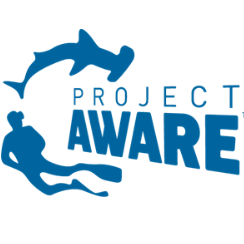
Scientists have begun using an innovative multi-disciplinary approach to monitor the oceans, taking advantage of advanced technologies such as machine learning and Artificial Intelligence (AI) to help them fill knowledge gaps.
Monitoring the ocean can be particularly challenging given both its size and depth. On the one hand, there is a vast amount of data that needs to be processed, yet on the other hand, there are large gaps in the data due to it being financially unviable and unfeasible to sample the entire ocean.
Since climate change is also affecting the ocean environment, causing changes in ocean temperatures, current patterns and marine ecosystems, which in turn can cause marine species to move in search of more favorable habitats, much of the data that has been collected is no longer accurate and is rapidly becoming obsolete. Yet, monitoring these changes, as well as the populations affected by them, is now more crucial than ever.
Marine scientists are turning to Artificial Intelligence applications to help them overcome these challenges. For example, with the assistance of Google engineers who developed a neural network similar to that used to recognize sounds in YouTube videos, AI is being used to detect whale songs from background ocean noise in thousands of hours of underwater sound recordings. This information can help marine scientists to monitor the distribution and movement of whale populations. Having a better understanding of where whales are located, their migration routes, feeding and breeding grounds, can help us protect them.
Scientists are also using machine learning to process whale sighting data collected from various sources, including human sitings, satellite imagery, sonar, radar and more, to model where whales are most likely to be. Armed with this information, decision-makers can make informed decisions with regard to establishing shipping lanes and cruising speed restrictions, as well as fishing restrictions or the siting of marine protected areas, to offer whales better protection.
But it is not only whales that are moving or threatened. Many species of fish are also moving, some of which are threatened by overexploitation and illegal fishing activities. Global Fishing Watch is an organization that together with the help of our friends at Google, is using AI to monitor the position of fishing vessels on the ocean and for making that information publicly available.
Using hi-tech sonar, AI algorithms are also being used to improve underwater mapping of the ocean floor and ocean properties. Scientists at the University of Bath's Institute for Mathematical Innovation (IMI) together with colleagues at Systems Engineering & Assessment Ltd (SEA) have developed an AI algorithm which makes sense of incomplete data and works out how many measurements are required for an accurate ocean survey.
AI technology has the potential to be used to monitor the entire ocean, providing more insight into the effects that climate change is having on ocean parameters, habitats and species. It can also help us to utilize marine resources more sustainably and reduce the impact of human activities on sensitive marine ecosystems. As such, AI is a huge game changer for ocean science, ultimately providing a tool that has the potential to significantly improve marine conservation efforts in the future.
Sources
Vicky Just. Using AI to map marine environments. Phys.org, May 6, 2020 [https://phys.org/news/2020-05-ai-marine-environments.html]
Tatiana Schlossberg. A.I Is Helping Scientists Understand an Ocean's Worth of Data. New York Times, April 8, 2020 [https://www.nytimes.com/2020/04/08/science/ai-ocean-whales-study.html]










